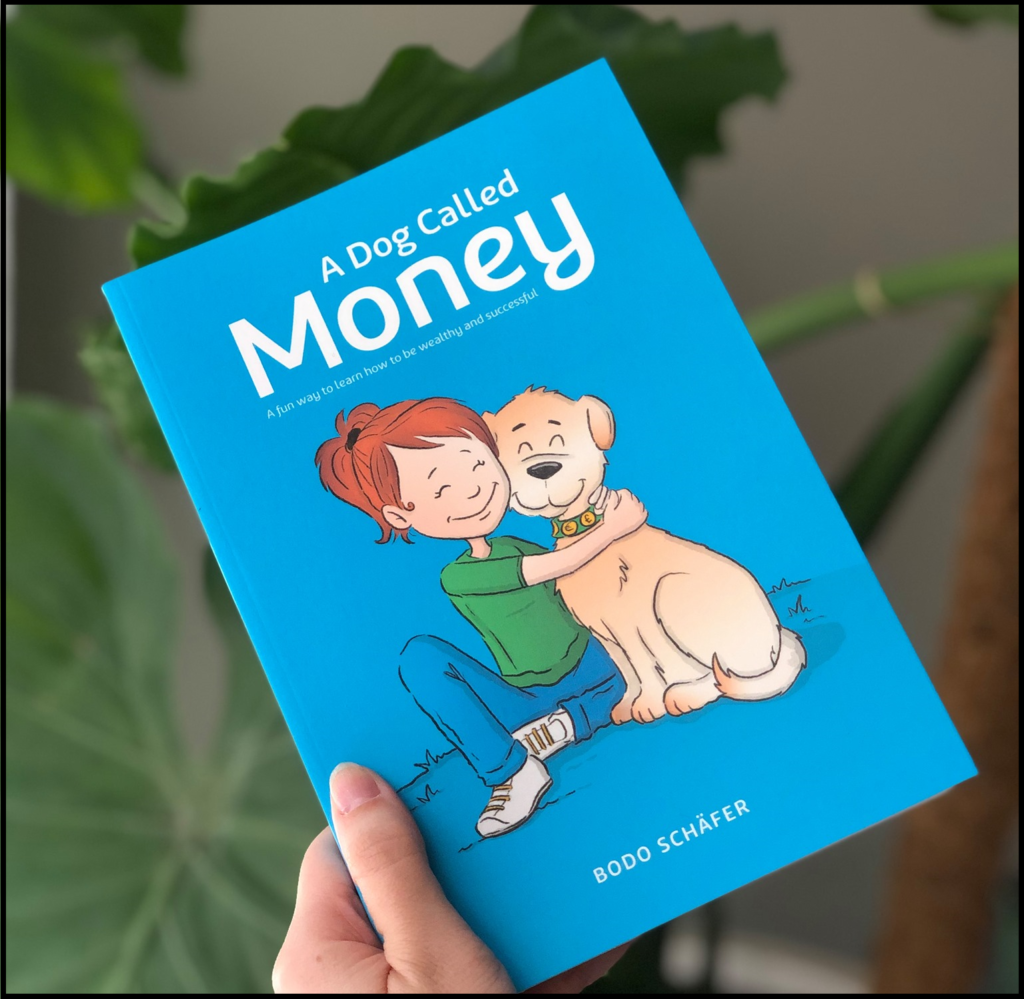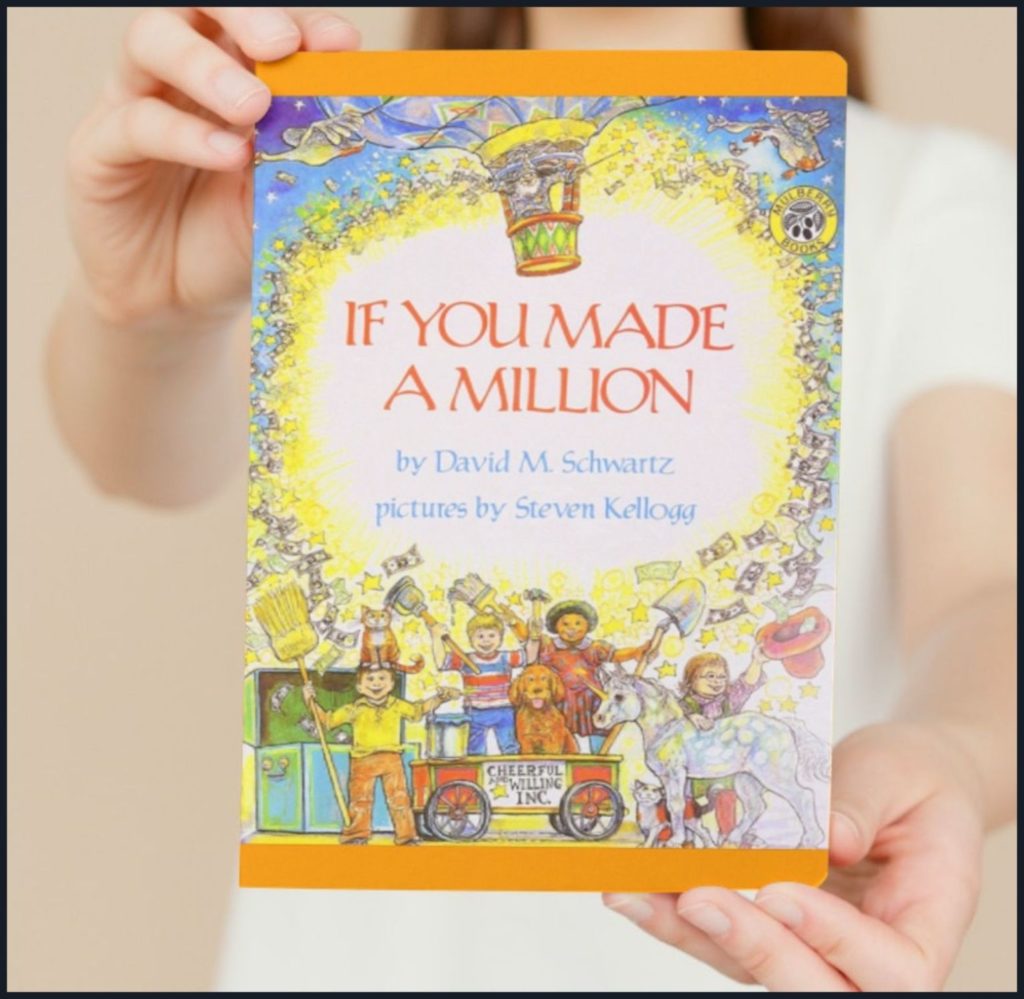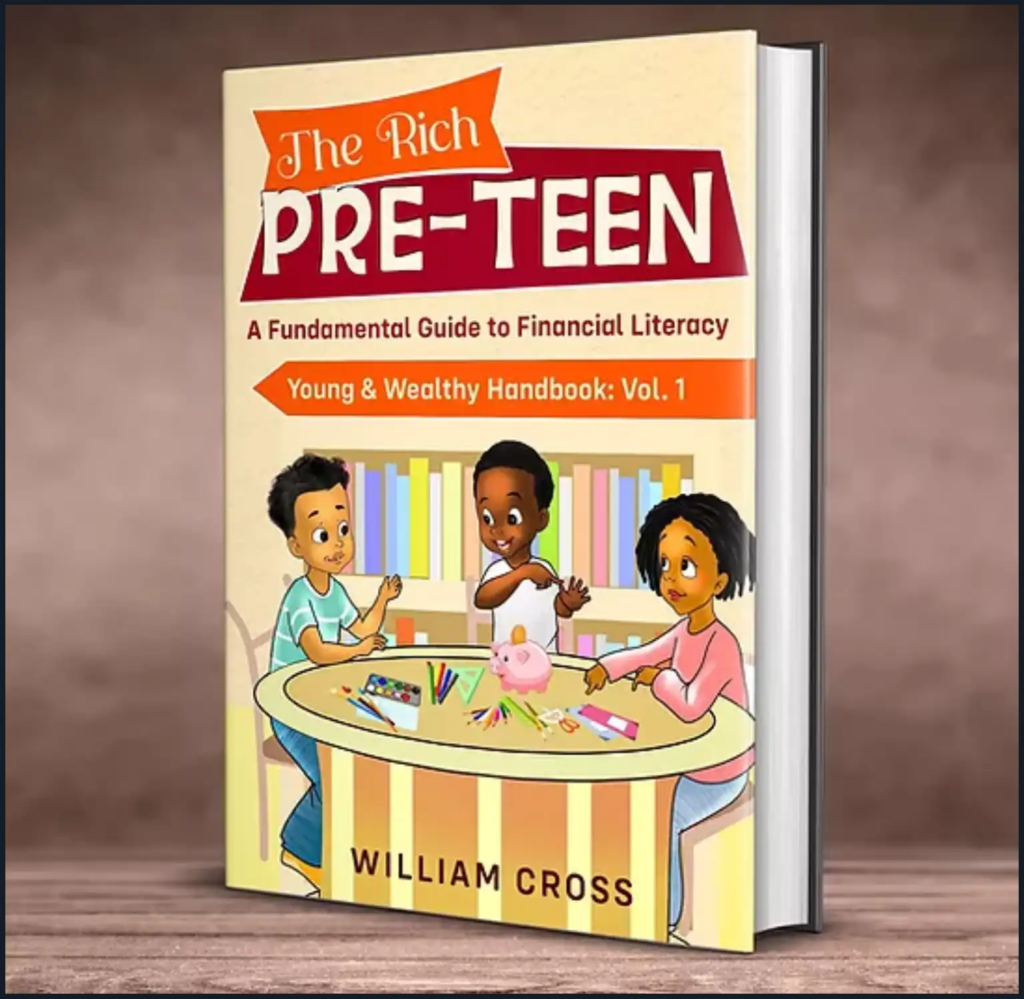BOOKS



A DOG CALLED MONEY
English edition of the bestseller ‘Ein Hund namens Money’ by Bodo Schäfer
Kira, a 12-year-old girl, lives in poverty, and her parents constantly argue about their shortage of money. One day, Kira finds an injured Labrador and takes him home. But whoever thought that a regular dog would turn out to be a financial genius? Through the friendship that Kira and Money build, Kira realizes that you really can make your dreams come true.
In this touching story, Money – the talking Labrador – shares tried-and-tested secrets about money that can be easily understood by children and adults alike.


INVESTING FOR KIDS HOW TO SAVE, INVEST, AND GROW MONEY
Financial Literacy book by Dylin Redling and Allison Tom
Did you know that the sooner you understand money, the sooner you can make more of it? It’s true! Investing for Kids can help make you money savvy, showing you how to earn it, how to start a savings plan, and the best ways to invest and create a future with money in the bank.
This book helps to learn about the concepts of “risk” and “reward” as well as learn how to diversify your portfolio and, ultimately, how to make your money grow.


IF YOU MADE A MILLION
Financial Literacy book by David M. Schwartz and Steven Kellogg
This book explains the basics of money—earning, investing, and even earning interest and dividends—via a playful magician named Marvelosissimo the Mathematical Magician. It earns extra points for including fun facts about money, ways for kids to earn money on their own, plus finance basics like how to write and cash a check.
This title, best for ages 4 to 8, was first published in 1989 but holds up well.


I WANT MORE PIZZA: REAL WORLD MONEY SKILLS FOR HIGH SCHOOL, COLLEGE, AND BEYOND
Financial literacy book by Steve Burkholder
The perfect back to school gift! Give the gift of financial literacy to your kid – they will thank you for a lifetime. You are not alone; it is often difficult to reach young adults on the topic of money management, but look no further.
I Want More Pizza leaves in complete control to find the plan that works for your young adult – it’s their choice.


THE RICH PRE-TEEN: A FUNDAMENTAL GUIDE TO FINANCIAL LITERACY
Financial literacy book by William Cross
This book is designed to educate the youth on wealth and financial literacy. It is for the younger generation to enhance their understanding of money, how to earn it, keep it, and multiply it. It is full of definitions and activities that will increase their understanding of financial literacy setting them up for a successful path as it relates to money matters in life.
Understanding finances and being able to apply simple financial principles, sets the groundwork for a successful life in society.


THE YOUNG INVESTOR: PROJECTS AND ACTIVITIES FOR MAKING YOUR MONEY GROW
English edition of the bestseller by Katherine R. Bateman
Explaining the language of finance and the skill of investing, this guide gives kids an early start at making their money grow. The book explains the general concept of money and demonstrates how saving works based on the concepts of simple and compound interest. Children then learn where Wall Street is located, what stocks and bonds do, and, with the help of an adult, the right way to buy or sell a stock, mutual fund, or savings bond.
Dozens of projects illustrate how to balance a checkbook, read a stock table, and understand common financial terms such as inflation, recession, and the Federal Reserve Board.


THE MOTLEY FOOL INVESTMENT GUIDE FOR TEENS: 8 STEPS TO HAVING MORE MONEY THAN YOUR PARENTS EVER DREAMED OF
Financial literacy book by authors David Gardner and Tom Gardner
The Motley Fool has made investing fun and easy for millions of people. Now, it custom designs its wit and wisdom for today’s money-savvy teens. The Motley Fool Investment Guide for Teens helps teens stand out from the ho-hum mutual-fund crowd, build a portfolio of stocks they can actually care about, and take advantage of the investor’s best friend—time—to watch their profits multiply.
From the personal-finance duo Fortune magazine called “funny, smart, cynical, [and] opinionated” comes savvy financial advice for today’s street-smart young investors.


HOW TO TURN $100 INTO $1,000,000: EARN! SAVE! INVEST!
Book by James McKenna, Jeannine Glista, Matt Fontaine
Want to become a millionaire? Or get a business off the ground? Or save up some money to buy a new bike? All it takes is understanding and putting into practice a few simple strategies and concepts about money:
Make it: Learn the ins and outs of scoring a first job, or even better, starting a business.
Save it: That’s right, millionaires are people who have a million dollars, not people who spend a million dollars.
Grow it: Invest and use the most powerful force in the financial universe–compound interest.
Next thing you know, you’re a bona fide financial whiz on the road to your first million.


WHY DIDN’T THEY TEACH ME THIS IN SCHOOL?: 99 PERSONAL MONEY MANAGEMENT PRINCIPLES TO LIVE BY
FinLit book by Cary Siegel
Why do high schools and colleges require students to take courses in English, math and science, yet have absolutely no requirements for students to learn about personal money management?Why Didn’t They Teach Me This in School? 99 Personal Money Management Lessons to Live By was initially developed by the author to pass on to his five children as they entered adulthood.
The book includes eight important lessons focusing on 99 principles that will quickly and memorably enhance any individual’s money management acumen.


PINIGŲ LAIŠKAI
Book by Timas Petraitis
Why am I telling you my savings story? I’m not trying to sell, but rather to share why it worked for me and why it still does. It’s important that you find your own answers to life’s various “whys”. Both the “why life is worth living” and other less fundamental ones.
Tim Petraitis has been working as a psychologist-psychotherapist for 16 years, giving seminars and trainings, and in his spare time he is a food courier. His regular experiments in life may seem unusual or even radical, but they are part and parcel of his personality. One of these experiments is the subject of ‘Money Letters’.
70,000 euros. That’s how much he saved in five years without going into business, but by discovering and adapting his savings model. But this is not a story of easy and quick success. And it is certainly not just about money.
Through lifestyle and habit changes, he has emerged from financial and personal crises, and at the same time changed his attitude towards money and his outlook on life. It is this experience, practical advice and tasks that the author shares in his letters.
This book is also a psychologist’s insights into a happier relationship with the world. And money has a role to play here. It can affect relationships, health, leisure, and vice versa – leisure, health, relationships can affect money.